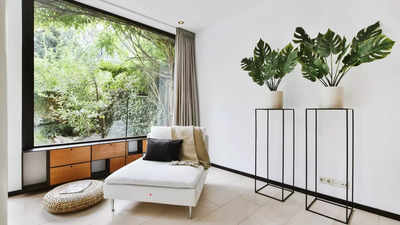In the overcrowded cities of today, such as Mumbai, there is little to no land available for new construction. Therefore, strategically repurposing existing structures has become an essential design solution that the future of design is increasingly embracing to create modern, luxurious spaces. Rather than demolishing iconic architectural landmarks, designers are now championing preservation, blending historical charm with contemporary opulence and functionality.
This sustainable shift transcends the mere use of eco-friendly materials; it involves working with existing structural elements as design parameters and drawing inspiration from them while also shortening project timelines and reducing the environmental impact. By harnessing the character of old buildings and seamlessly integrating modern elements, designers preserve the building's identity while delivering spaces equipped with the latest amenities and technology. This holistic new design approach addresses the need to preserve the existing, optimising resource utilisation and fostering a sense of community.

The economic advantages of such initiatives are also substantial. Adaptive reuse projects often prove to be more cost-effective than new constructions, and they significantly reduce waste and carbon footprints, contributing to a healthier environment. Former industrial estates in Mumbai are undergoing a metamorphosis into vibrant shopping hubs and brand showcases.
Here lies an opportunity to breathe new life into these structures, embracing their raw beauty. The designer then becomes responsible for introducing interventions that infuse warmth and richness into the ambience without erasing its authenticity. As designers explore adaptive reuse to create contemporary spaces from existing structures, several creative interventions can transform run-down buildings into vibrant hubs of modern living.
Embracing the inherent character of existing elements such as walls, columns, slabs, and fenestrations becomes pivotal. Through careful restoration and strategic enhancements, these elements are transformed into focal points that blend historical charm with contemporary functionality. Drawing inspiration from successful adaptive reuse projects globally, designers integrate innovative design approaches that elevate original architectural features.
This approach celebrates the authenticity of buildings while incorporating modern amenities and technologies. Bold, contemporary geometric forms and carefully curated colour tones are introduced to redefine spatial dynamics. These elements not only captivate the eye but also segment expansive areas into intimate, functional zones.
In certain instances where the heritage structure is intact, a simple but powerful design approach is to rejuvenate spaces through subtle interventions, creating a transcendent space connecting the past and the present. This approach stems from being mindful and sensitive to honour and preserve the existing structure, striving to minimise damage to the existing elements and allowing the intrinsic beauty of the original architecture to shine. Ensuring no intrusive interventions are used can lay the foundation for many distinctive and creative concepts by designers.
For instance, a crucial design aspect would involve seamlessly integrating the spaces both visually and aesthetically, creating a holistic perception. This can be achieved by weaving the entire space with a tapestry of illumination, using hanging lights as both functional elements and aesthetic features. The suspended lights serve as visual connectors, harmonising disparate zones within the interior spaces.
The chosen lighting systems should traverse spaces without requiring conduits or drilling, optimising plug-and-play functionality while preserving the building's structural integrity. Enhancing existing timeless elements with a modern flair is another creative design intervention. Delicately juxtaposing old and new geometries can accentuate fenestrations and edges, followed by highlighting various architectural elements within the space through varying contemporary pop-up pastel colours.
Highlighting elemental details brings to the forefront and celebrates intricate, historical details while giving a modern touch to the spaces. Subtle additions such as ornamental paintings or patterns in transitional corridors add a sense of character to the space, reminiscent of the heritage, while strictly modern in design approach. In fast-paced metropolises, this design approach can help save a lot of time and money since the plan of action can be exceptionally concise and practically achievable, preventing cumulative delays.
In certain instances, projects can even be completed within a month, reducing demolition costs, property, material, rental, labour, and resources while also reducing the environmental impact. Reusing our existing built environment to create contemporary, luxurious spaces that celebrate heritage is currently one of the most sustainable design approaches with immense scope. As designers become increasingly conscious of the environmental impact of the AEC industry and the climate emergency, along with rapid technological advancements, this approach is set to become the most popular among designers in the near future.
Spokesperson Rahul Mistri- Principal Designer, Open Atelier Mumbai.



















